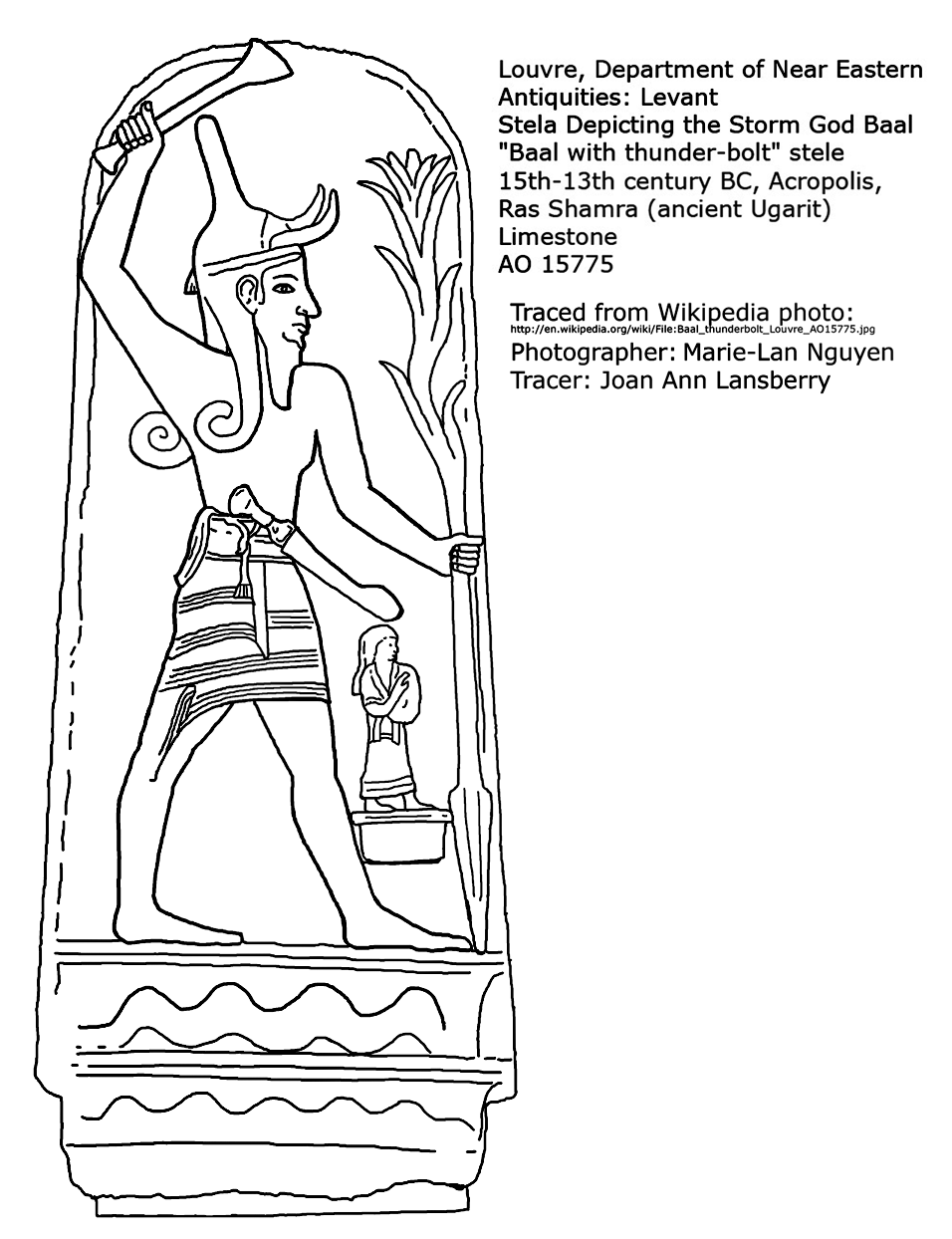|
New Kingdom, 19th-20th Dynasty (ca. 1295-1070 B.c.) Unalloyed copper, solid cast, with separate right arm; auriferus silver and copper alloy inlay; partially clad with gold sheet; altered in antiquity by removal of ears and addition of ram horns and crown with lituus; feet with lower legs, right horn, and reattachment of right arm are 19th-century restorations. H. as restored 67.7 cm (26 5/8in.), W 35 cm (13 3/4in.), D. 30cm (11 3/4in.) Ny Carlsberg Glyptotek, Copenhagen MEIN 614) [cat. no. 13] Provenance: unknown, said to be from Saqqara;2 Posno collection; Hoffmann collection; Jacobsen collection; acquired in 1899 Scanned and quoted from _Gifts for the Gods:Images from Egyptian Temples_, pages 34-37 Edited by Marsha Hill and Deborah Schorsch. Published in conjunction with the exhibition “Gifts for the Gods: Images from Egyptian Temples” at The Metropolitan Museum of Art, New York, October 16, 2007–February 18, 2008.
"Altered in antiquity by the removal of its upright
ears and the addition of horns, this statue retains
the characteristic drooping snout of the fabulous
Seth-animal. The resulting representation has traditionally
been ascribed to Khnum, but the god
Amun is more likely5"
This wouldn't be the first time that associations between Set and Amun have been made, as Egyptologist Salima Ikram has also noted, and Set and Amun have appeared together. There's also a more general association for Amun was considered to be "the god 'who exists in all things'" as "the ba or soul of all natural phenomena."(From _The Complete Gods and Goddesses of Ancient Egypt_, by Richard Wilkinson, page 94)
I wasn't privileged to see this statue in person when it had its short stay in New York, but one of my colleagues did, and he brought back a stunning image:
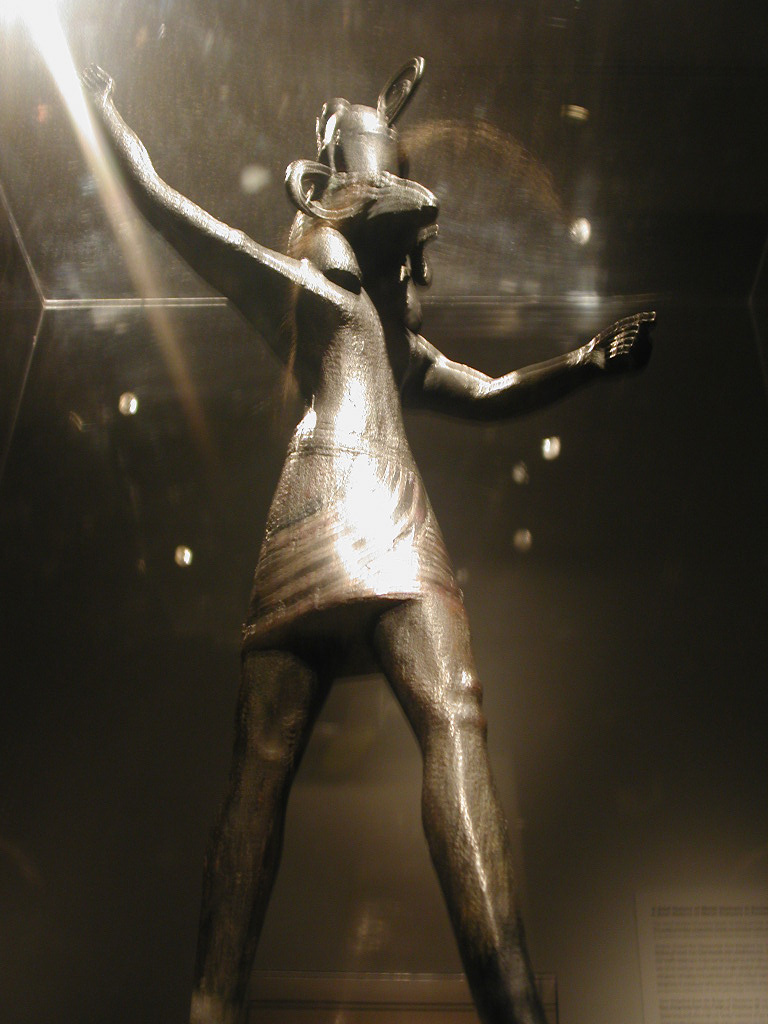 Photo © Mark Roblee
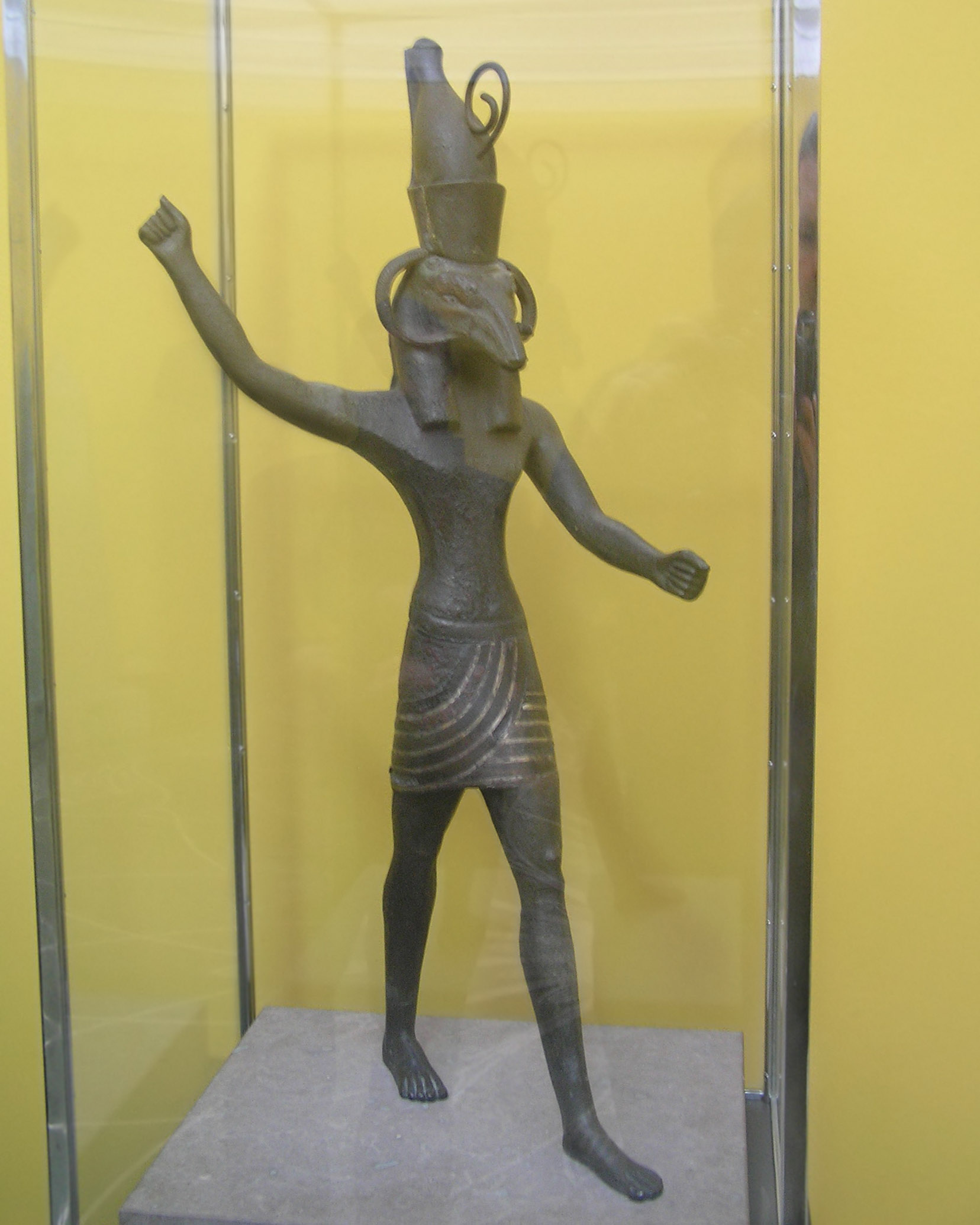 Photo © Bo Christiansen
These two will print nicely to 8x10! "The Glyptotek Seth's pose recalls more closely representations of foreign gods as warriors, with right arm raised, and the established relationship between the god Seth and Canannite gods such as Baal and Reshef my provide clues leading to a better understanding of the figure. Metal statuettes of these deities were produced in the Levant during the Late Bronze Age, beginning around 1500 BC. Based on the observation that such deities, unlike kings, were not shown grasping prisoners, Izak Cornelius replaced the term smiting god, which proceeds from 'smiting pharoah', with menacing god, and he suggests that the images conceptualize power by virtue of the gods' raised right arms, even if they do not hold a weapon." (From _Seth, 'Figure of Mystery'_, by Deborah Schorsch and Mark T. Wypyski in JARCE 45 (2009) page 186) LACMA museum has an example of this 'menacing god':
(From museum info card) We can see some of that gold foil still attached to this piece. Although very little of the gold foil remains on the figure of Set, "Channels extending up the sides of the torso and below the arms, on the wig, and on the backs of the legs, where little scraps of sheet remain confirm that gold also clad these parts of the god's body." (Schorsch and Wypyski, page 105) The statue of Set has further association with statues of Baal like the one above: "In the beginning of the Ramesside period there was undoubtedly a strong trend at court and in the army in favour of worshipping Seth in the Asiatic form of his appearance, i.e. as Baal." "Not a single image of Baal has been found in Egypt, in which he is not also Seth." (_Seth, God of Confusion_, by TeVelde, page 126) |
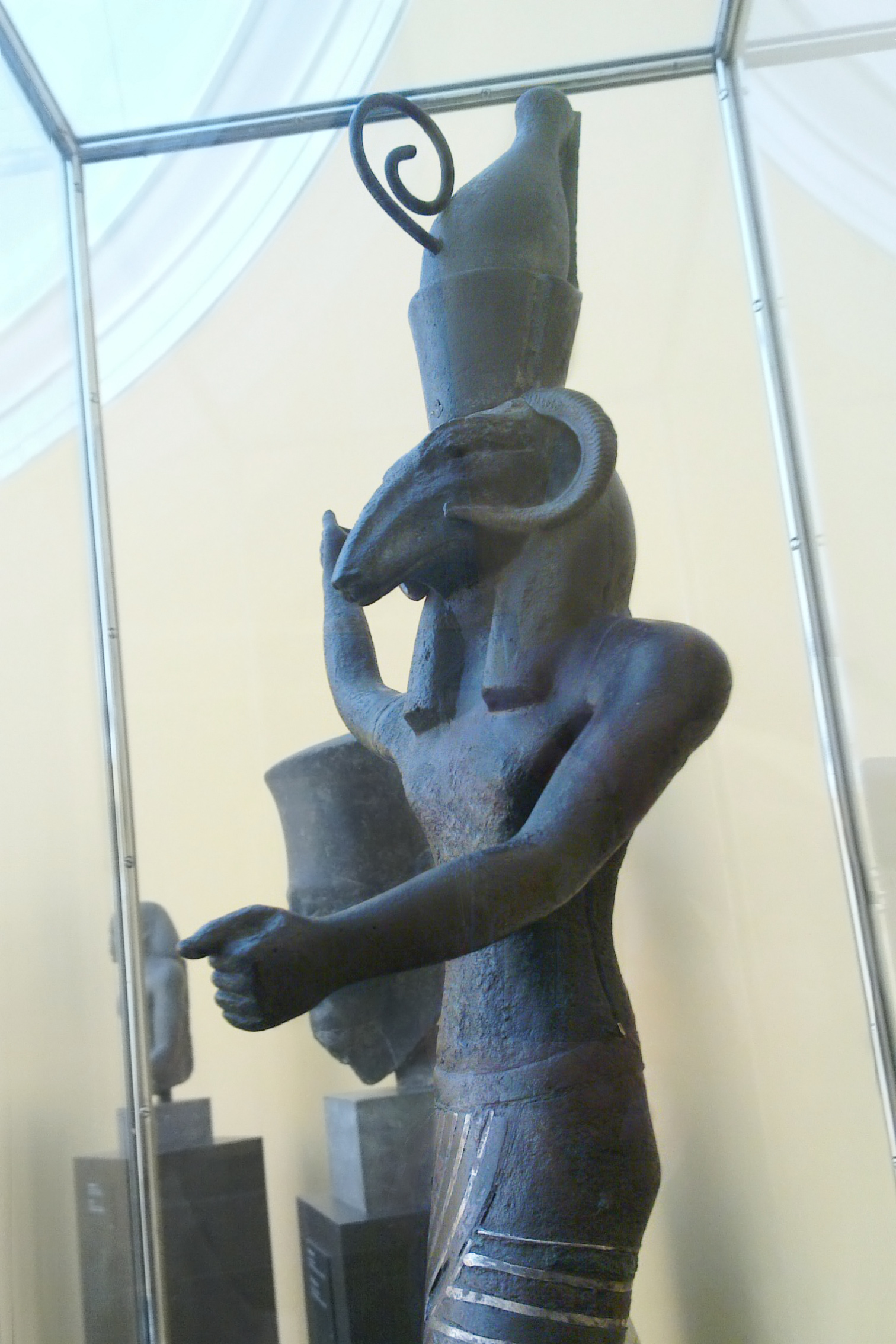
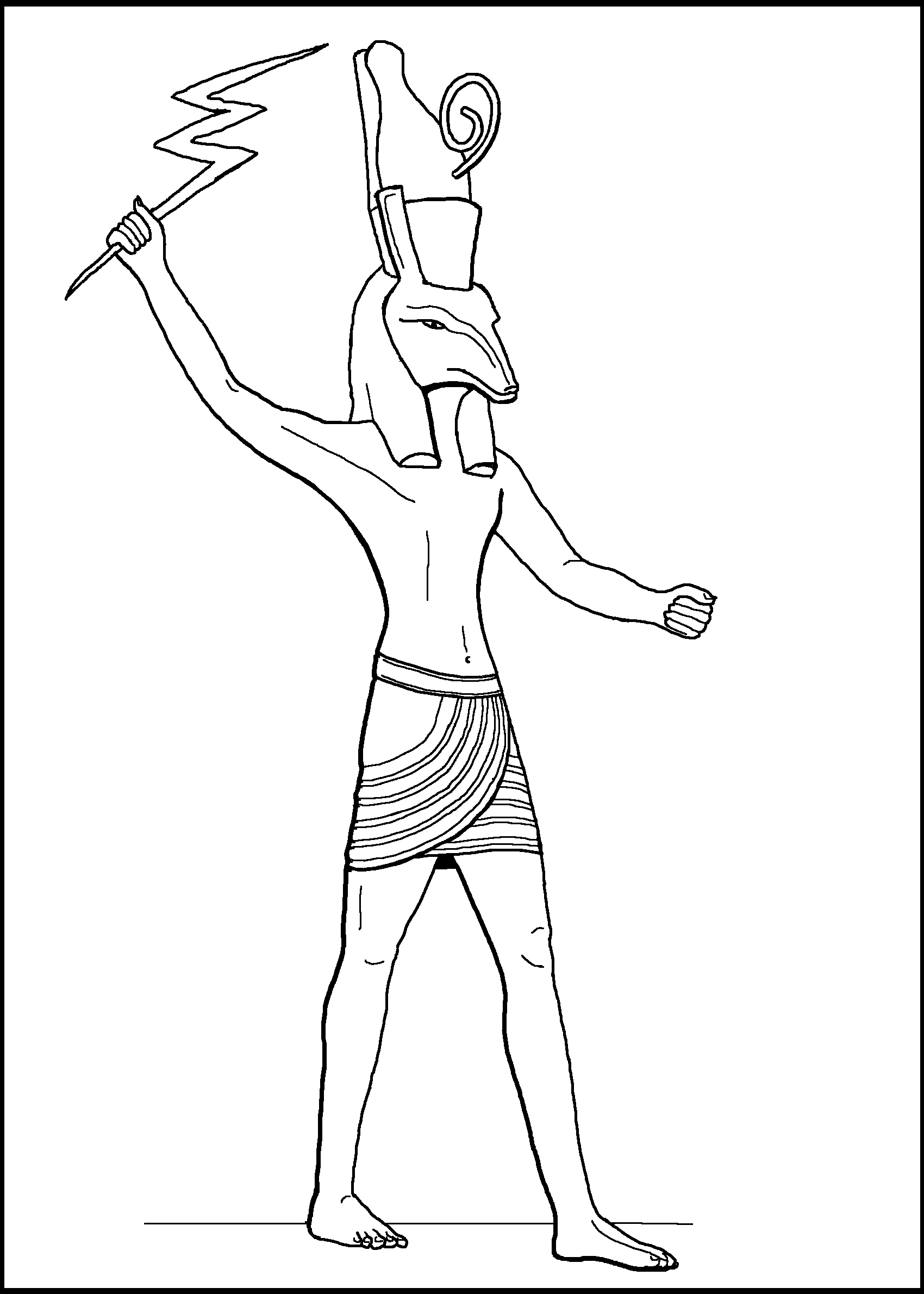
|
The Louvre has a stela depicting the Storm god Baal with whom Set was assimilated. This stela shows Baal is the same 'menacing' pose as both the LACMA statue and the Glyptotek statue. In the stela, however, his hands are brandishing a club and thrusting a spear from which vegetation surges upwards. The small man on the platform is possibly the king of Ugarit, who is under the aegis of the god.
The kilt has similar detailing to that of the Glyptotek statue: 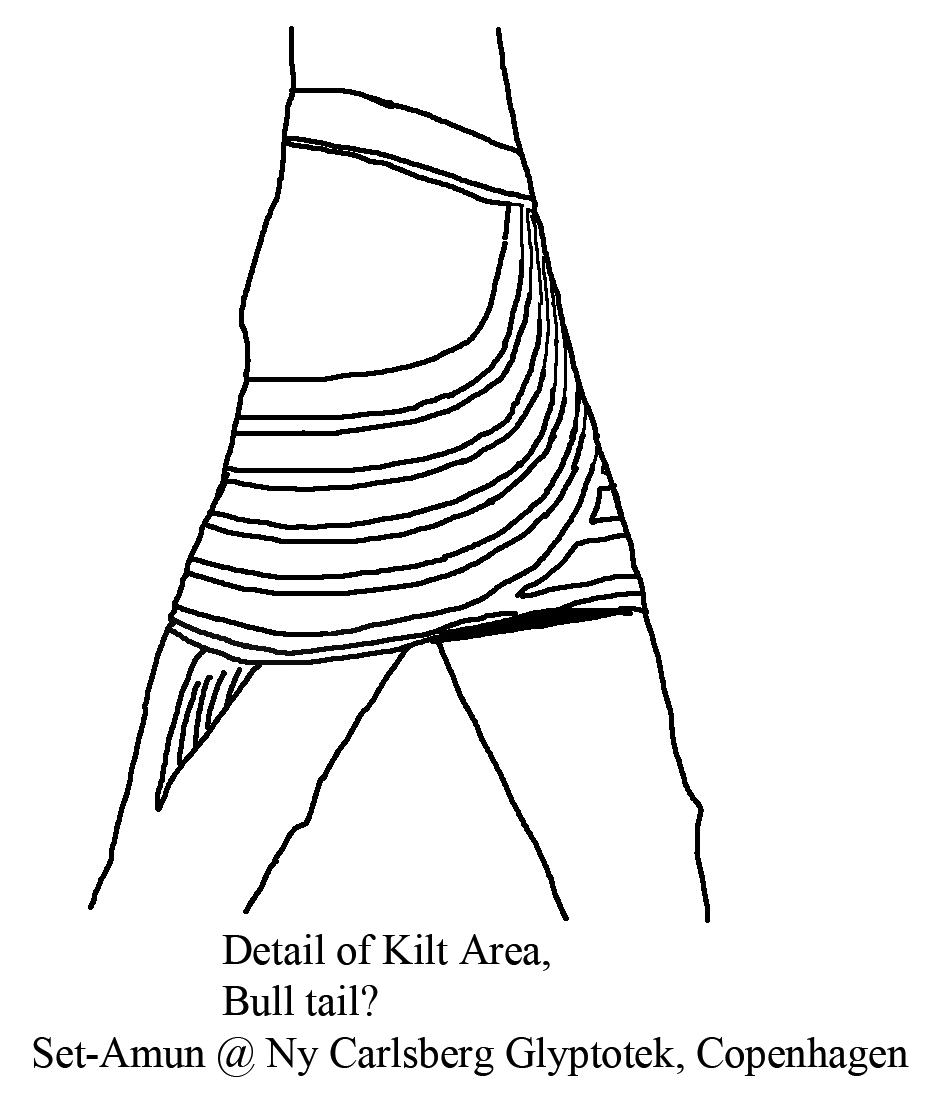
|
